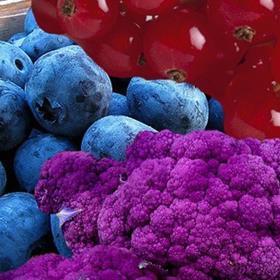
Children have traditionally been told to eat their greens, but in fact the blue in blueberries, the red in redcurrants and the purple in purple-sprouting broccoli could also be beneficial to human health, according to a series of new research projects being carried out across Europe.
Researchers taking part in the initiative, known as the Athena Project, are studying the potential impact of consuming the blue and red pigments found in various fruits and vegetables on human health.
Known as anthocyanins, the water-soluble pigments found inside the cells of several items of fresh produce appear red, purple or blue according to their pH level.
The Athena Project, part of the European Commission's Seventh Framework Programme (FP7) of research-related initiatives, aims to discover how good dietary anthocyanins are in protecting against chronic disease.
In preclinical studies carried out in animals, anthocyanins were found to contain health-promoting dietary polyphenols which protected against cardiovascular disease, cancer and obesity.
Taking part in the project are six Italian groups – the Agricultural Research Council (Rome), Kos Genetic (Milan), Sacred Heart Catholic University (Campobasso), the University of Milan and the European Institute of Oncology (Milan) – as well as Istanbul Technical University (Turkey), University Joseph Fourier (France), Wageningen University & Research Centre (Netherlands), the Leibniz Institute of Plant Genetics and Crop Plant Research (Germany) and the Institute of Food Research (UK).






No comments yet